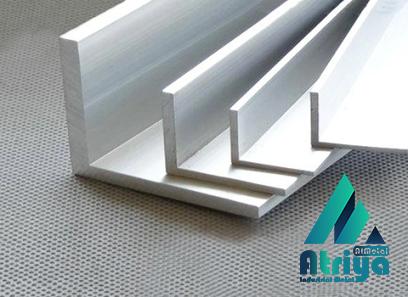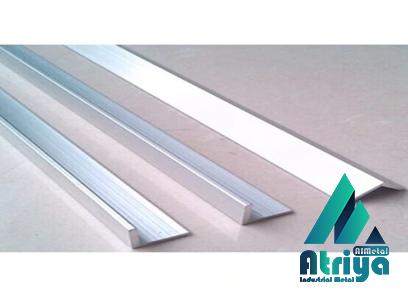A Versatile Solution for Structural Applications When it comes to structural applications, aluminium angle is a popular choice for architects, engineers, and construction professionals. It offers a plethora of advantages that make it a versatile and reliable option for various projects. From its strength and durability to its aesthetic appeal, aluminium angle has become a go-to material in the construction industry. One of the primary benefits of aluminium angle is its exceptional strength-to-weight ratio. Compared to other construction materials like steel or wood, aluminium angle offers a significantly lighter weight without compromising on strength. This makes it an excellent choice for applications where weight restrictions or portability is a concern, such as in the aerospace or transportation industries.

.
 In addition to its structural strength, aluminium angle also exhibits excellent corrosion resistance. Unlike steel, which is susceptible to rust and deterioration over time, aluminium angle is highly resistant to environmental elements such as moisture or chemicals. This makes it an ideal choice for outdoor applications or projects in corrosive environments, such as coastal regions. Another advantage of aluminium angle is its aesthetic appeal. With its sleek and modern look, it can enhance the visual appeal of any project. Architects and designers often opt for aluminium angle to create clean lines and contemporary designs, adding a touch of elegance to both residential and commercial buildings. Furthermore, aluminium angle is relatively easy to work with due to its malleability and versatility.
In addition to its structural strength, aluminium angle also exhibits excellent corrosion resistance. Unlike steel, which is susceptible to rust and deterioration over time, aluminium angle is highly resistant to environmental elements such as moisture or chemicals. This makes it an ideal choice for outdoor applications or projects in corrosive environments, such as coastal regions. Another advantage of aluminium angle is its aesthetic appeal. With its sleek and modern look, it can enhance the visual appeal of any project. Architects and designers often opt for aluminium angle to create clean lines and contemporary designs, adding a touch of elegance to both residential and commercial buildings. Furthermore, aluminium angle is relatively easy to work with due to its malleability and versatility.
..
 It can be easily cut, drilled, or welded to fit specific design requirements, making it an excellent choice for custom projects. Its ability to be shaped and formed allows for endless possibilities in architectural and structural designs. In terms of sustainability, aluminium angle is an environmentally friendly option. Aluminium is a recyclable material, with high recycling rates making it a more sustainable choice compared to non-recyclable materials like plastic or concrete. Choosing aluminium angle contributes to reducing waste and promoting a circular economy.
It can be easily cut, drilled, or welded to fit specific design requirements, making it an excellent choice for custom projects. Its ability to be shaped and formed allows for endless possibilities in architectural and structural designs. In terms of sustainability, aluminium angle is an environmentally friendly option. Aluminium is a recyclable material, with high recycling rates making it a more sustainable choice compared to non-recyclable materials like plastic or concrete. Choosing aluminium angle contributes to reducing waste and promoting a circular economy.
…
 Despite its numerous advantages, it is crucial to consider the specific requirements and design considerations of each project when using aluminium angle. As with any material, proper installation and maintenance are necessary to ensure the longevity and performance of the structure. In conclusion, aluminium angle is a versatile solution for structural applications due to its strength, durability, and aesthetic appeal. Its lightweight and corrosion-resistant properties make it an excellent choice for various projects, while its malleability allows for customization and creative designs. As the construction industry continues to evolve, aluminium angle remains a reliable and sustainable option for architects and construction professionals alike.
Despite its numerous advantages, it is crucial to consider the specific requirements and design considerations of each project when using aluminium angle. As with any material, proper installation and maintenance are necessary to ensure the longevity and performance of the structure. In conclusion, aluminium angle is a versatile solution for structural applications due to its strength, durability, and aesthetic appeal. Its lightweight and corrosion-resistant properties make it an excellent choice for various projects, while its malleability allows for customization and creative designs. As the construction industry continues to evolve, aluminium angle remains a reliable and sustainable option for architects and construction professionals alike.











Your comment submitted.